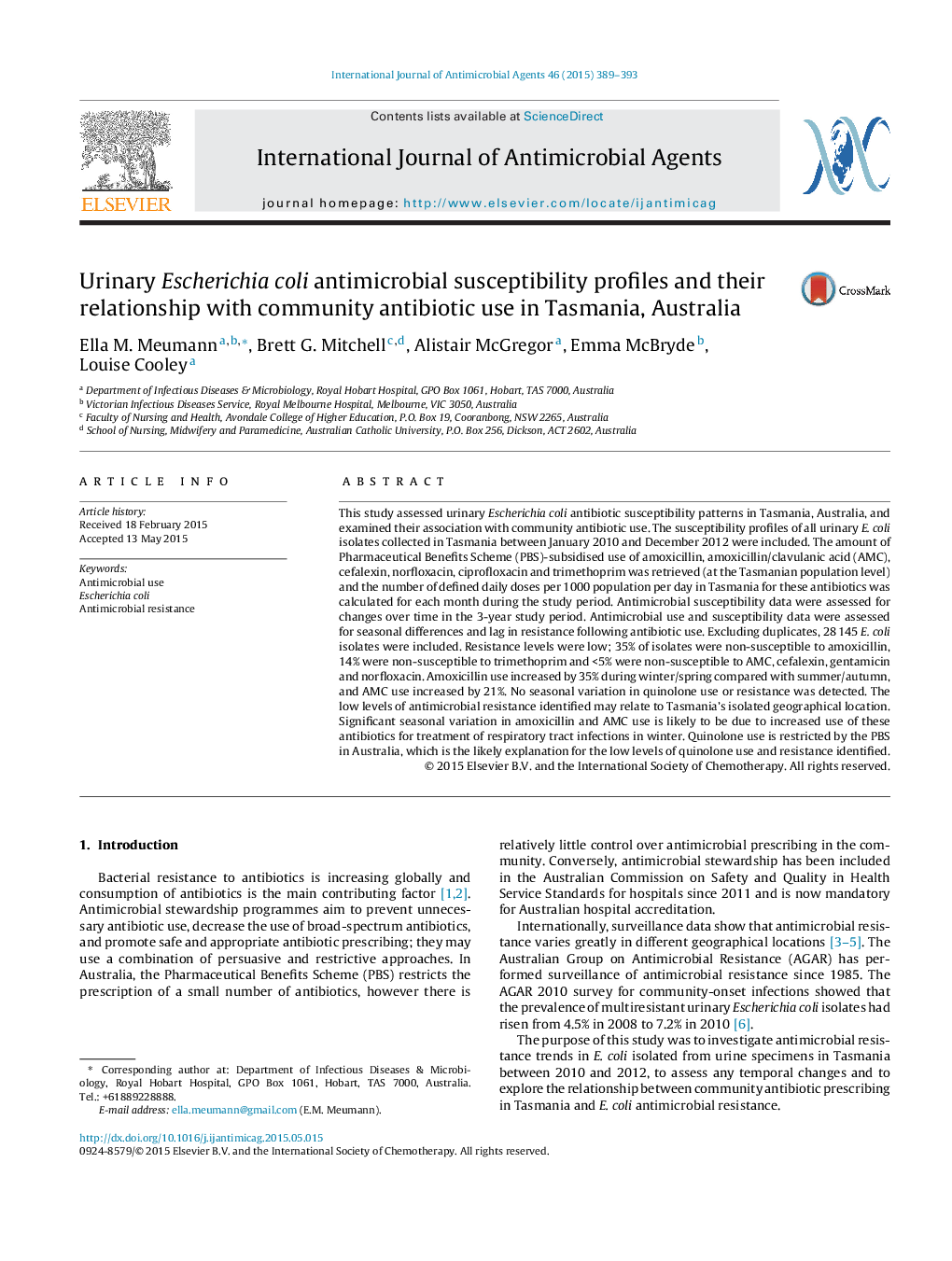| Article ID | Journal | Published Year | Pages | File Type |
|---|---|---|---|---|
| 3358571 | International Journal of Antimicrobial Agents | 2015 | 5 Pages |
•Escherichia coli antimicrobial resistance is low in Tasmania.•Low levels of resistance may be due to geographical isolation.•There is significant seasonal variation in amoxicillin and amoxicillin/clavulanic acid use.•Quinolone use and resistance remains low due to restrictions on use.
This study assessed urinary Escherichia coli antibiotic susceptibility patterns in Tasmania, Australia, and examined their association with community antibiotic use. The susceptibility profiles of all urinary E. coli isolates collected in Tasmania between January 2010 and December 2012 were included. The amount of Pharmaceutical Benefits Scheme (PBS)-subsidised use of amoxicillin, amoxicillin/clavulanic acid (AMC), cefalexin, norfloxacin, ciprofloxacin and trimethoprim was retrieved (at the Tasmanian population level) and the number of defined daily doses per 1000 population per day in Tasmania for these antibiotics was calculated for each month during the study period. Antimicrobial susceptibility data were assessed for changes over time in the 3-year study period. Antimicrobial use and susceptibility data were assessed for seasonal differences and lag in resistance following antibiotic use. Excluding duplicates, 28 145 E. coli isolates were included. Resistance levels were low; 35% of isolates were non-susceptible to amoxicillin, 14% were non-susceptible to trimethoprim and <5% were non-susceptible to AMC, cefalexin, gentamicin and norfloxacin. Amoxicillin use increased by 35% during winter/spring compared with summer/autumn, and AMC use increased by 21%. No seasonal variation in quinolone use or resistance was detected. The low levels of antimicrobial resistance identified may relate to Tasmania's isolated geographical location. Significant seasonal variation in amoxicillin and AMC use is likely to be due to increased use of these antibiotics for treatment of respiratory tract infections in winter. Quinolone use is restricted by the PBS in Australia, which is the likely explanation for the low levels of quinolone use and resistance identified.
